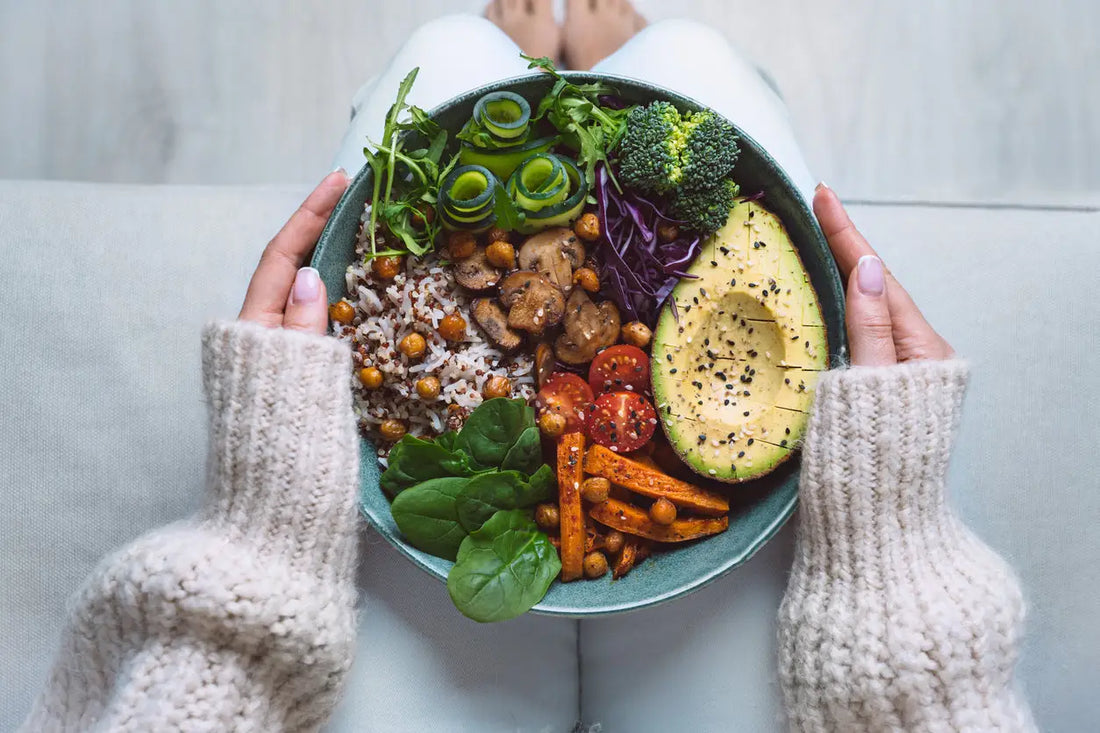We all know that what we eat affects our health in countless ways, but did you know that it also plays a significant role in how your skin looks? Keeping your blood glucose (sugar) levels stable not only benefits your overall health but also has a powerful impact on the appearance and vitality of your skin. Elevated post-meal glucose levels, if left unchecked, can lead to issues like premature aging, breakouts, and dullness. In this blog post, we’ll explore simple ways to lower post-meal glucose and how they contribute to healthier, younger-looking skin.
1. Go for a Walk After Meals
One of the simplest ways to lower post-meal glucose is by moving your body. Light exercise, such as a brisk walk, helps your muscles use up glucose for energy, which lowers the amount circulating in your blood.
Impact on Skin: Increased circulation from exercise delivers oxygen and nutrients to your skin cells, giving your complexion a healthy glow. Plus, balanced blood sugar levels prevent the breakdown of collagen, a key protein that keeps your skin firm and youthful.
2. Stay Hydrated
Water is your skin’s best friend! Staying well-hydrated not only helps your body flush out excess sugar but also keeps your skin looking plump and radiant.
Impact on Skin: Dehydration can make your skin appear dry and dull, which highlights wrinkles and fine lines. Drinking water throughout the day helps maintain skin elasticity and prevents dryness.
3. Eat Balanced Meals with Fiber, Protein, and Healthy Fats
A balanced plate of protein, healthy fats, and fiber-rich foods (like leafy greens, legumes, and whole grains) slows down the digestion of carbohydrates. This prevents sharp glucose spikes and keeps your energy levels—and skin—stable.
Impact on Skin: Foods rich in antioxidants, healthy fats, and fiber help to combat inflammation, one of the main causes of skin problems like acne and premature aging. Omega-3 fatty acids found in foods like salmon, walnuts, and chia seeds support skin hydration and reduce redness, giving you that dewy, youthful look.
4. Avoid Refined Sugars and Simple Carbohydrates
Sugary snacks, sodas, and refined carbs (like white bread and pastries) quickly break down into glucose, causing blood sugar spikes. Repeated spikes lead to a process called glycation, where sugar molecules bind to collagen and elastin in the skin, making it stiff and prone to wrinkles.
Impact on Skin: Limiting refined sugars and opting for whole, unprocessed foods helps to preserve collagen and elastin, maintaining the skin's elasticity and preventing the appearance of fine lines and sagging.
5. Try Apple Cider Vinegar Before Meals
Apple cider vinegar (ACV) has been shown to improve insulin sensitivity, which means your body can more efficiently manage blood sugar levels. Drinking a small amount of diluted ACV before meals may help prevent blood sugar spikes.
Impact on Skin: By preventing blood sugar spikes, you reduce the risk of glycation and inflammation—two factors that accelerate skin aging. This helps preserve your skin’s elasticity, keeping it firm and youthful.
6. Manage Stress Levels
Stress causes your body to release hormones like cortisol, which can increase blood sugar levels. Elevated cortisol can also trigger inflammation and breakouts.
Impact on Skin: Chronic stress can lead to skin problems like acne, redness, and even accelerated aging due to the breakdown of collagen. Practicing relaxation techniques like meditation, deep breathing, or yoga can help keep your skin clear and youthful.
7. Get Enough Sleep
Sleep is your body’s time to repair and regenerate. Poor sleep increases insulin resistance, causing blood sugar levels to stay elevated longer after meals.
Impact on Skin: During sleep, your skin cells regenerate and repair damage. Lack of sleep can slow down this process, making your skin look tired, dull, and prone to breakouts. Aim for 7-9 hours of quality sleep to wake up with a fresh, glowing complexion.
How Stable Glucose Levels Contribute to Healthy, Youthful Skin
Balanced blood glucose isn’t just about internal health—it directly influences how your skin looks and ages. When you manage your glucose levels:
-
Prevents Glycation: Glycation is the process where excess sugar attaches to proteins like collagen, causing them to become stiff and damaged. This accelerates the formation of wrinkles and sagging skin. By keeping blood sugar levels stable, you help protect your skin’s structural integrity.
-
Reduces Inflammation: High glucose levels trigger an inflammatory response in the body, which can lead to skin issues like acne, rosacea, and psoriasis. Balanced glucose reduces inflammation, keeping your skin calm and clear.
-
Supports Collagen Production: Healthy glucose levels promote optimal collagen production, keeping your skin firm and smooth. Collagen is responsible for your skin’s elasticity, and when it's well-maintained, your skin stays youthful and resilient.
Conclusion: Glow from Within
Keeping your blood glucose levels in check is not just about avoiding long-term health issues like diabetes; it’s also about supporting vibrant, youthful skin. Small lifestyle adjustments—like taking a walk after meals, staying hydrated, eating balanced meals, and managing stress—can help prevent those unwanted glucose spikes that age your skin. By taking care of your body from the inside out, you’ll achieve a natural glow and radiance that no expensive cream or treatment can match.
Embrace these habits, and you’ll not only feel healthier but also look younger and more vibrant for years to come.

